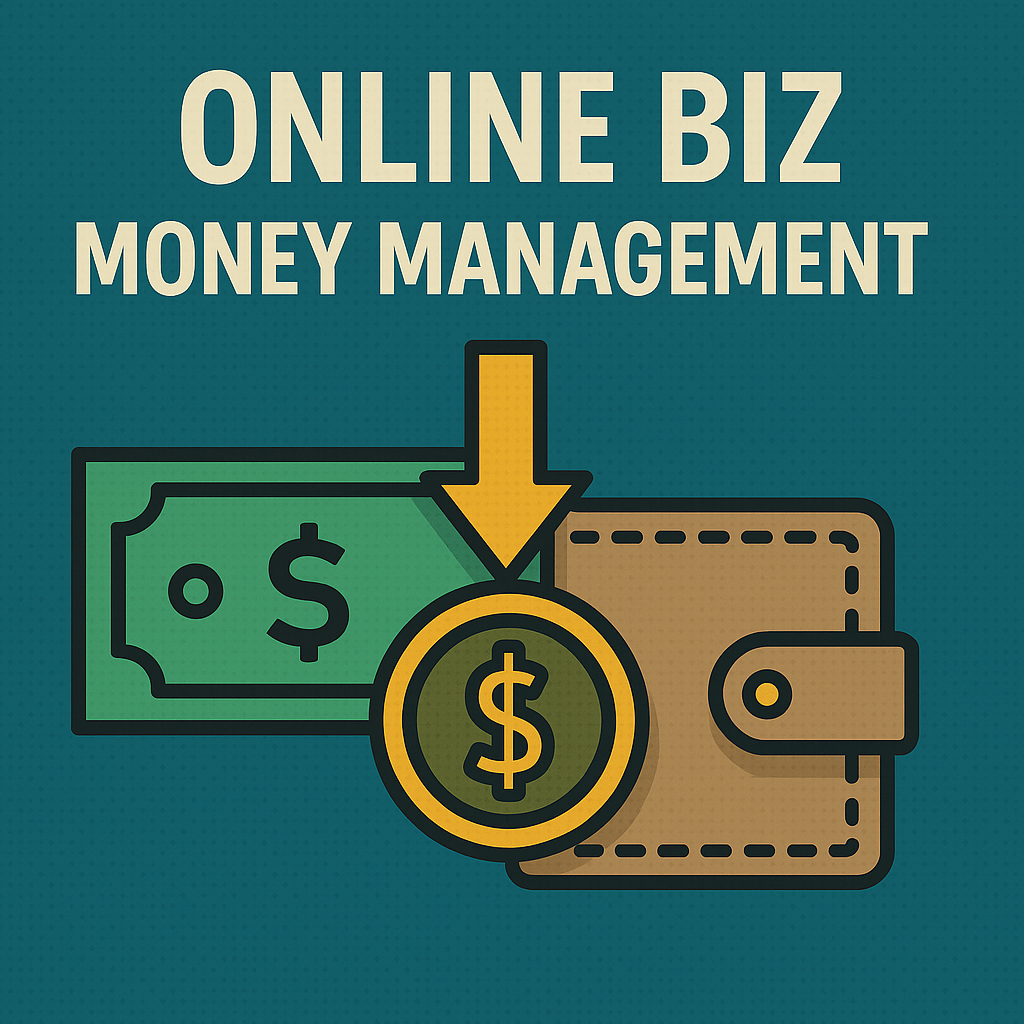Smart Money Moves for Growing an Online Business

Building a business online can be exciting, overwhelming, and intimidating all at once.
While startup costs are much lower than launching a brick-and-mortar store, they can still pile up fast if you’re not paying close attention.
If you’ve already made a few bucks online—maybe sold a product, picked up a client, or landed your first affiliate commission—congrats! That’s a solid start.
The Stripe alerts and PayPal notifications are rolling in. It finally feels like things are happening.
But oddly enough, your wallet might still feel suspiciously light.
If you’re wondering where the money went, you’re not alone.
A lot of marketers are good at generating income. Fewer know how to manage it, grow it, and keep it like a real business owner.
That’s exactly why you’re here.
This isn’t just another blog post—it’s a field manual for anyone building an online business who actually wants their bank account to reflect their hustle.
Step 1: Know Your Business Stage
Your financial strategy should match your current reality—not where you hope to be six months from now.
If you’re just starting out, your #1 job is to operate lean.
That means using free tools like Systeme.io, avoiding expensive memberships, and focusing on learning what actually works—before investing in what doesn’t.
If you’re in the middle stage, with a few consistent streams of income, your biggest challenge is probably unpredictability. One month you bring in $3,000, the next you’re scrambling to piece together invoices.
At this “feast and famine” stage, your focus should shift toward stability: track everything, control spending, and build a cash buffer.
If you’re further along—maybe with regular income and a growing team—your goal becomes efficiency.
Where can you streamline? Where are you overspending? Where is your time best used?
Here’s a quick breakdown:
Beginner
You’ve made a few sales. You’ve bought too many courses. You’re trying to do everything all at once.
Money rule: Spend as little as possible. Use free tools. Focus on testing offers and proving your concept.
Intermediate
Sales or clients are coming in, but expenses are eating your profit.
Money rule: Start budgeting. Audit every recurring cost. Build a buffer for slow months.
Pro
You’ve got revenue and maybe a team, but your margins are thin.
Money rule: Track everything. Optimize what works. Delegate with purpose.
Spending like a “7-figure business” before you’re even profitable is the fastest way to go broke—with a fancier dashboard.
Step 2: Budget Before You Need To
Most people treat budgeting like a fire extinguisher—only useful when flames are already raging.
You can do better. Start by listing your income streams: freelance gigs, affiliate payouts, product sales, side projects.
Now write down all your monthly expenses.
Break them down:
- Fixed: hosting, email platform, domain renewals
- Variable: ads, courses, freelancers, SAAS subscriptions
Then be brutally honest. That $12 monthly tool you forgot about? That’s $72 gone in six months.
The first fix is awareness. When everything is in one place, you’ll naturally start making smarter decisions.
Awareness = control. Control = growth.
Use a Notion template, Google Sheet, or budgeting app. Doesn’t matter what you use—just use something.
Step 3: Build an Emergency Fund
Payment Holds. Clients ghost. Launches flop.
A small emergency fund gives you breathing room.
Start with $1,000. That can cover a slow month or emergency bill. Then aim to build 3–6 months of core business expenses.
Keep it separate—ideally in a different bank account. The harder it is to “accidentally borrow from,” the better.
Emergency funds don’t make you rich. They just make sure you’re still in the game when life throws a curveball.
Step 4: Spend When You’re Building, Not Planning
This one’s huge.
Many marketers spend money prepping for a future project they haven’t started yet. Buying domains, tools, subscriptions… all for “when I launch.”
But that kind of spending quietly kills momentum—and your budget.
Before buying anything, ask:
- Is this for a project I’m actively working on?
- Will it generate or save money in the next 30–60 days?
- Will it replace something I already use?
If the answer is no, wait.
Step 5: Kill Shiny Object Syndrome
We’ve all done it.
You see a new course, a guru with the “secret,” or a limited-time tool deal… and you’re reaching for the credit card.
Here’s a better approach: create a wishlist.
Instead of buying on impulse, add new tools or courses to the list. Check back in a week. Still interested? Cool. Still interested a month later and you’ll actually use it? Go for it.
Impulse spending is sneaky, but systems beat willpower every time.
Step 6: Cut Costs Without Slowing Growth
Running lean doesn’t mean being stingy. It means being focused.
Start with free or freemium tools until you need more. A few essentials:
- Funnels & automation: Systeme.io
- Design: Canva
- Docs: Google Drive
- Organization: Notion
- Payments: Stripe, PayPal
Cancel what you’re not actively using. Those forgotten subscriptions? That’s money that could go to your emergency fund—or your next growth move.
Step 7: Split Your Income with Intention
It’s easy to treat a great month like a jackpot. But wild spending kills businesses.
Instead, try this split:
- 50% reinvest in your business
- 30% save or build your emergency fund
- 20% pay yourself
If your income is inconsistent, base the split on your average income from the past three months—not your best month.
This builds discipline without strangling growth.
Step 8: Don’t Quit Your Job Too Soon
One good month isn’t a reason to fire your boss.
Going full-time without a cushion turns your dream into a pressure cooker.
You’re ready to go full-time when:
- Your business consistently earns 2x your monthly expenses
- You’ve saved 3–6 months of living costs
- You’ve got systems that produce predictable income
Until then, think of your day job as startup funding.
“I work full-time on my job and part-time on my fortune.” —Jim Rohn
Step 9: Build Habits That Stick
Good money management isn’t about perfection. It’s about rhythm.
Each week:
- Check income
- Review expenses
- Adjust where needed
Each month:
- What did I make?
- What did I spend?
- What worked?
- What didn’t?
Then set real goals. Not followers. Not vanity metrics. Real, financial goals like increasing profit margin or cutting waste.
In Conclusion… Profit Is Freedom
Revenue is loud. Profit is freedom.
If you make $10K but spend $8K, you don’t have a $10K business—you have a $2K one.
The most successful entrepreneurs aren’t the ones bragging about income. They’re the ones quietly stacking margin, building resilience, and sleeping well at night.
Make your hustle count. Build a business that lasts—and lets you keep what you earn.
Ready to Make Smarter Money Moves?
You don’t need a big budget to build a real online business—just the right guidance and tools. Scroll down to check out our recommended opportunity designed for beginners who want to grow income without wasting time or cash.
It’s affordable, flexible, and built to support your long-term success.
Start where you are. Build something that lasts.

